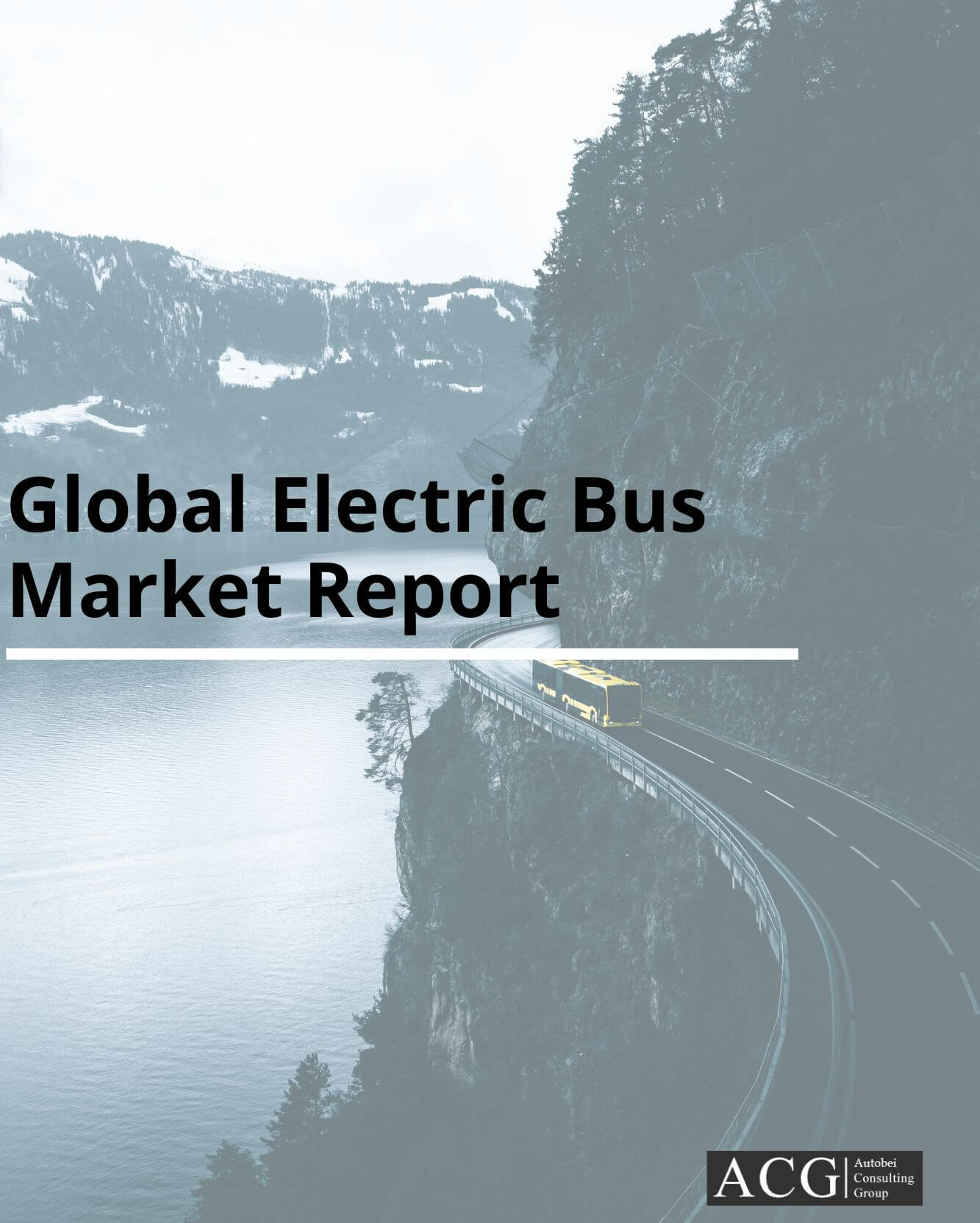The Indian Bus Industry volume was around 94,000 units in 2011 and it touched more than 1 lakh units in FY 2017. The Bus penetration in India less compares to other emerging countries.
There is huge potential in India for the Buses. Smart Cities or Amrut will drive the Premium Bus segment. Customer affordability is increasing because of increasing in the Young population. Moreover, working women mainly prefer to go in the Premium buses for the safety and comfort reasons. The government was also taking very aggressive decisions on the infrastructure & on the regulations such as max speed of 150 Km/hr on the Delhi corridor, Euro 6 of preponement, AC fitment etc. All these are having a motto of aggressive innovation in India, and this will make the advance costly feature which is available with low and affordable cost such as Tyre pressure monitoring, variable temperatures in AC, Automatic braking thru radar, Air suspension and AMT etc.
Bus Buying Parameters Analysis: There are different buying parameters for every Bus Application. The tender works on entirely different buying condition. In a case of luxury buses, recently the ROI changed from 2 years to around 3 years. This factor is having a negative impact on this segment sales.
In the recent times, in commercial vehicle sector, developments of next 10 years will increase with what has taken place in the previous decade. There are 3 types of technologies which are happening here.
1. Autonomous driving
2. Alternative drivelines
3. Connected Bus (Telecommunications, sensors etc.)
In a broader level, the segment is defined in 3 categories, Premium/Luxury, Value Plus and Low cost. The low-cost segment is moving towards value plus segment. The size of a premium bus market currently is around 2% percentage of the total bus market. In past times, the market was really challenging & has been stagnated. In this premium bus market, coaches & the city buses were having the equal amount of market share. But in coming 5 years, Industry will able to see increased numbers, particularly in coach segment.
Presently, Volvo is the market player in the category of luxury buses and having the market share of nearly 60%. Scania is also be playing in the same segment & snatching the market share from the Volvo Buses.
Six years past, this 50 % of city buses was largely from JNuRMM scheme which is now closed. There is no alternate for the 50 % of volumes which were happening & city bus market almost get shut down. Even though the coach market is growing because of the middle-class, their traveling habits & their affordability.
The buses are the main capital item and the customer is buying it to generate the revenue & profits. The whole ecosystem suppliers, OEMs, dealers & customers are to be in a profit zone. If any one of these is not profitable the entire ecosystem will get fail and then sooner or later, the market will get recover & OEMs will struggle.
The demand for the AC buses is growing very rapidly. Rising the disposable income in India was the main reason. The other reason was to be the increasing temperature levels in every city & also towns across the India. Rising of the urbanization & growing of the infrastructure was also creating the market for the buses & AC buses are no longer will be looked upon as costly alternatives to the conventional non-AC buses. Travelers are also getting ready to pay the high amount for their comfort. With STUs & the city bus, they are undertakings the warming up to the outlook of the AC buses, so the brighter future was certainly towards the bus AC manufacturers.
Investment in the additional capacities was also certainly helping the bus AC manufacturers in order to raise their market reach & also offers a deal which promises the ‘best value for money’. Investment in the R&D centers, application engineering & service networks are the main steps to be implemented in a right direction. This type of steps will also ensure that the AC bus industry will grow beyond the estimated rate of the growth of 15 %.
The market for the bus AC manufacturers was appearing good, in the case of School buses. Most of the STUs & city bus undertakings were already have the AC buses as their flagship offerings. The total number of AC buses in India was been estimated as 10-12 % (around 10,000 units) of the total bus market, the number was growing rapidly. But when we look at the rising demand, it was quite natural for the bus AC manufacturers to gear up for their growth. To be a market leader in India for the luxury bus ACs, Eberspaecher Suetrak, the Indian arm of USD 4.4 billion German major Eberspaecher, is known to supply above 2500 units of its AC 353 model to the large buses till now.
Govt is also taking an initiative to improve public transportation quality by taking several steps. The government came up with the bus building code in order to ensure that, the buses are built as per the stipulated standards which are related to the safety, design & comfort.
AIS: 052 this code represents, that every bus manufacturing unit will obtain the accreditation certificate and to demonstrate its capabilities to build the buses as per some of the safety standards. These rules are set by the ARAI, which is the premier testing & certification agency.
This notification will apply to all of the companies & individuals who are engaged in the bus manufacturing or bus body building of the vehicles, which are having the seating capacity of 13 or even more passengers & all bus types will be covered under this code. From Jan 2018, every bus body code is scheduled to implement completely. We believe that this is a great decision & also a high time that it will be implemented completely. Safety is very necessary for the mass transportation solutions. In past, the bus body building industry has been unorganized from so many decades. Currently, India is having around more than 10,000 bus body builders but very few are organized players. By the presence of huge unorganized sector, safety & the knowledge of regulations goes in a wayward & the bus body code will also address various issues.
Mainly Bus Body Code implementation is now diluted & also staggered over 2 phases – with initial obligations implemented purely on the dimensional criteria. OEM already adopted body code not only just these dimensional aspects but the complete scope of the current version of the Body Code. Cutting corners for the safety, these are OK for the small Body Builders, but not consistent with the OEMs ethos & they took first opportunity to comply in full.
Any type of Bus Body which is built in the OEMs factory is completely compliant with the Body Code. There is some extra amount incurred but it is worth for the customers, passengers & brand value. ACG hope that Govt. should not further stagger or even dilute the implementation & same will be strictly implemented & enforced on schedule time.
Legroom step height, require simulation, driver seat, emergency door, sticker & safety, survival space, OEMs are having the facilities. Prototype requires the heavy amount, everywhere cost consultant, design issue, lobby forced are not implement the bus body code.
OEMs keep high quality of bus compare to local body maker, like Paint shop will cost higher, finally product affected, quality of the front to rear, concentricity, no scratches should be there, all buses should look like same, bumper body gaps, door gaps, no compromise in the testing quality process, care need to be taken for small to smallest things, headlamps life, reliable product issue after the 6 months, no noise vibration, durability should be good in Volvo, Scania bus.
In spite of the growing the popularity of the air travel, there is also a growing trend for the travelers to opt for the buses. It makes more sense to consider a coach. While traveling in between 2 cities which lie within some distance of about 250 km & also well-linked with 4 or 6 lane highways or expressways.
Industry is able to view a major transformation in this particular sector over the next coming 3 – 5 years. The transformation regarding improving the road networks, marginal growth in the railways & also increased the requirement for the mobility, long distance of travel by using the inter-city buses is also going to undergo some volume of shift and also with the customers who are expecting more value from Buses.
Presently Ashok Leyland has a 60 percentage of market share in the inter-city travel application particularly with the non-premium buses, which are trending nowadays. Even though, the market moves towards the comfort & longer distance travel.
Some of the new products are going to launch, in coming 12 – 36 months, a slew of the products in this segment. These products are ranging from Luxury Coaches to simple coaches which are reliable & efficient buses. These product design based on some of the current Platforms.
Presently Indian OEMs are able to seamlessly & reliably implement the good solutions for all the customers in the areas of Telematics, web/app/cloud based solutions, materials & processes including the 3D printing.
But, in-order-to stay in the game, the whole industry still has a to go long way while new frontiers such as Big Data, Internet of Things & other tools will move from the cusp to “mature” part of Gartner’s Hype Curve.
We expect that the industry is going by a revolution & lot of challenges such as changing from the front engine to the rear engine & manual transmission to the automatic transmission. Under FAME initiative, there is a lot of action which is happening in terms of the hybrid & electric buses. Likewise, moving from the non-air-conditioned buses to complete air-conditioned buses, entertainment systems and electronics, composites coming into bus sector, there is a lot of things are happening in bus industry more when compared with the car industry in terms of the transformation.
Mumbai-Pune, Ahmedabad-Vadodara, Delhi-Chandigarh, Delhi-Jaipur, Delhi-Agra, and Bangalore-Chennai, demand the buses & also the luxury coaches will be expanded phenomenally in coming years. Already India’s bus transport business is so huge, and India ranks among the top-10 in the whole world in bus segment. But the market for the air-conditioned luxury coaches is so limited, it is estimated that it is less than about 1,000. Even though the luxury bus segment is growing at the compound annual growth rate of nearly 22.7% from 2011 to 2016. Value Bus also registered growth but low-cost segment showed de-growth in the same period.
Currently, the market does not have so many electronic engines, the penetration of the AMT in the commercial vehicles space is also very less. Now with the BS-IV emission norms in the place, it becomes the starting point of the AMT engines. The technology is also expected to penetrate gradually, possibly starting with city bus applications. The comfort of the driving & more fuel efficiency will play an important role to influence the buying behavior. In trucking segment, the intra-city vehicles, where there is a need to have so many gear shifts, would be the first ones to adopt the AMT technology. In Europe, penetration is already 80 percentage. In next five years, this technology will have at least 30% of the Indian commercial vehicles.
ACG estimates that the market electric & hybrid buses in India will reach to 400-500 units in next year.
6 High Power Euro engines, Electric/Hybrid /Bio Gas Buses, AMT and Automatic brakes thru Radar.
16 years back Volvo has been launched & created its own brand when every Indian assumed as the cost sensitive. Now Scania & MB are using this brand new premium bus market created by Volvo. The trend is for the Sleeper buses along with the water closets for the long distance as the train availability will remain constraint in India. Tata Motors has launched 2 electric buses: one is stretching 9 meters & other is 12 meters under the Ultra range, & a 12-metre hybrid with Starbus badge. The prices are in between Rs 1.6 crores to Rs 2 crores. Incentives on the electric buses will be given on the project basis: The buyer is refunded by 75% of the capital cost for an electric bus. The industry requested the Ministry of Heavy Industries to extend incentive to all the orders. We expect the segment is set to the witness a compounded of annual growth rate of 20-25% in coming 3 years, as the state transport was undertakings have shown the sustained increase.
The main motto is to encourage the people to step out of their cars & to start using the public transport. This is badly needed because of the traffic congestion. Even though, the public transport needs an attractive experience in terms of the timeliness, cleanliness etc. Customers are ready to pay more amount of money for their comfort & safety and also for the other features such as AC & sleeper coach are trending very much when compared with the normal rather than the luxury.
Aviation tickets are also decreasing & they will compete in the future with the Premium buses customers. Fast trains & metro train are expected soon for various cities & will impact the market of the Buses. Availability of the spare parts, cost & service network will remain as a challenge. Electronics service will also remain as a challenge because very few experts can able to handle in case of the field issues.
Rapid increasing of the infrastructure development & smart cities regulations will automatically push the Premium bus market.
Euro 6 preponed & Euro 5 totally skipped Aggressive implementation of regulations such as BS4 /Bus code etc. HVAC for the commercial vehicle should plan in 2017 itself, very good focus on the Smart Cities & Tourism, this will attract various passengers for the premium buses. Electric Buse's policy in the place (FAME) & ambitious aim of replacing all the Buses to the electric by 2030 – 2032 by Cabinet minister Mr. Piyush Goyal.
Excellent Multifold progress in the infrastructure when compared with past decades. Bharatmala is projected, and the main motto of the project is to connect almost all the directions in India. Various Metro/Smart City projects will able to drive the infrastructure growth. Various airports are also planned in the coming years.
Under Make in India, innovations cost significantly will be decreased. GST will also have some positive impact on this industry. Make in India Policy will also promote local supplier. This move will give cost effective products. Battery cost of the electrical vehicles is also expecting to decrease by 50% in last 2 years.






